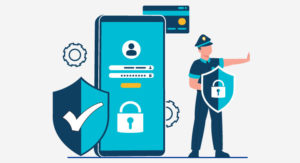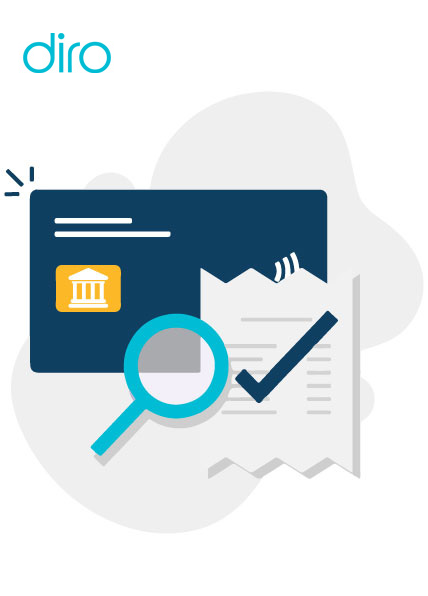Vendor Fraud Practices and Prevention

Businesses often overlook fraud red flags. In the long run, this leads to monetary and reputational losses. Vendor fraud has become highly prevalent across several industries. When vendor fraud happens, the culprit could be someone from your own team or someone you trusted. It could also be a fake vendor that wasn’t verified properly.
Every business needs to make robust and reliable partnerships with vendors to thrive. Fraudsters often take advantage of this reliance on vendors to trick businesses into making wrong payments.
Here are some of the most common types of vendor fraud, and how you can prevent them:
Common Vendor Fraud Types
1. Phony Vendors
One of the most common methods of vendor fraud is fake vendors pretending to be legit. Fake vendors try to get businesses to make payments for fake services. It can take a long time before companies uncover the fraud.
In some cases, even employees pose as fake vendors to exploit known weaknesses in payment systems. Employees can set up fake vendors, and make fake invoices to get payments in their accounts.
Common red flags to uncovering fake vendor fraud include:
- Photoshopped invoices
- Photocopied invoices
- Companies with no real-address
- Sequentially numbered invoices
- Companies with addresses of post offices
Companies should train their employees to check for red flags in invoices raised by vendors. If there’s a specific vendor that raises invoices just below the sum that needs approval from higher-ups.
2. Fake Invoices with Real Vendors
Sometimes an employee from your business and an employee from the vendor’s team can collaborate to come up with a scam. Both members of the team can collude to trick the business into making wrongful payments.
A vendor may submit fake invoices, and an employee at the purchasing department will make payment for the amount. The payment is made to a personal account and split between the two.
This type of fraud becomes common when the supplier and business teams are in close contact. To prevent this kind of fraud businesses must do due diligence before they hire their employees.
3. Kickbacks
If your business performs contract work, then kickbacks are another type of vendor fraud you need to be wary of. The person who approves the contracts could be receiving kickbacks from their vendors. Common red flags for this kind of fraud include:
- Fewer bids than expected/needed.
- Widely ranging bids on the same project.
- Sudden and unexplained deadline changes.
Kickbacks also happen when you’re paying higher prices for low-quality products. Making cash payments to your employees is the hardest to detect as there’s no record of these payments in company books. But they are reflected in higher pricing from vendors. Even fraudulent vendors need to cover their costs.
To minimize losses, companies should always look for consistent shortages, communications that happen informally between vendors and staff, and poor record keeping.
How to Effectively Identify Vendor Fraud?
The key to fighting vendor fraud is knowing where to look. If you don’t know where to look for it, you won’t be able to detect it. Here are some basic measures any company can take to prevent vendor fraud:
- Check for the vendor’s pricing structure. If the prices look too good to be true, they’re probably scams.
- Don’t be lenient on any single invoice. Scrutinize every invoice submitted by the vendor or submitted on behalf of the vendor. If there are two same invoices with the same invoice numbers, it’s probably a fraud.
- Most companies follow their own invoice format. If the invoice was made using Microsoft Excel, it’s a red flag.
- A vendor that doesn’t have a verifiable taxpayer identification number is most likely to be a fake vendor.
- Do vendor onboarding checks? Run Vendor KYB checks, and background checks to see if they’re legit or if they have a history of fraud.
- Any vendor with a P.O. box address is likely a fraud.
Tips for Vendor Fraud Prevention
Knowing how to look for vendor fraud is one thing, but it’s not enough to identify vendor fraud. What’s important is to prevent vendor fraud from happening.
- Manage Vendors Effectively
Fraudsters keep evolving their methods of conducting fraud. When you’re fighting vendors, you need to come up with an effective vendor fraud management system.
With an ideal vendor fraud management system in place, it will become easier to manage vendor risk. Ideal strategies can significantly reduce the risk of fraud.
- Audit Vendors Regularly
Keeping a track of vendors is essential. Even a trusted vendor can suddenly start doing fraud. Frequent vendor auditing can help you protect your business against huge financial losses caused by fraudulent schemes.
- Multi-Level Payment Approval Process
Vendor fraud happens the most at businesses where there are just one or two employees handling vendor invoices.
To prevent making fraudulent payments, vendor invoices should go through multiple processes from different departments.
- Use Invoice Matching Technique
Invoice matching is pretty basic but it can reduce vendor fraud significantly.
As the name suggests you have to match invoices submitted by vendors against internal records such as purchase orders, payment receipts, inspection slips, etc.
To ensure you achieve the best possible results, you have to match the invoice against multiple documents.
- Don’t Make a Single Employee Manager
Sometimes, several employees work with each other to commit fraud. This is why businesses go such a long time without detecting fraud. Usually, its employees in the procurement and payments department conduct these kinds of fraud.
The best way to manage risks and prevent fraudulent vendor payments is to keep rotating employees and moving them across different departments. This can ensure that no one employee has too much power.
- Thoroughly Verify Vendors
Vendor verification is a crucial part of the process. During vendor onboarding, you should verify the vendor’s business information. This includes vendor proof of address verification, vendor KYB checks, and vendor bank account verification.
Running through these checks simply means that you’re using vendors you can trust.













